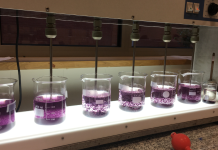Magnetic separators are essential in the electronics industry, playing a key role in material separation, e-waste recycling, and protecting sensitive components from magnetic interference. They help remove ferrous contaminants from raw materials, enhance the recovery of valuable metals from e-waste, and ensure manufacturing equipment remains free of harmful particles. However, challenges exist in handling increasingly small and delicate components, requiring ongoing technological advancements in separator design and stronger magnets to meet industry needs.
What is magnetic separation? Magnetic separation is a process that uses magnetic forces to separate magnetic materials from non-magnetic ones. The technique is commonly applied to various industries, including electronics, where it helps remove ferrous contaminants from raw materials or other elements in a manufacturing process. Magnets are utilized to attract and pull ferrous materials away, ensuring the purity of the product and preventing damage to equipment or products.
Magnetic separators in the electronics industry are used for material purification, e-waste recycling, protecting components from magnetic interference, cleaning manufacturing equipment, and enhancing surface treatment of electronic parts for quality control.
Magnetic separators are widely used to remove ferrous contaminants from raw materials during electronics manufacturing. For example, when raw metals or plastics are processed, magnetic separators can extract any unwanted iron particles, ensuring the integrity and quality of the materials used in production.
E-waste recycling often involves recovering valuable metals like gold, copper, and rare-earth elements, which are crucial for the electronics industry. Magnetic separators can effectively isolate ferrous materials and enhance the extraction process, making the recycling of e-waste more efficient and environmentally friendly.
Sensitive electronic components, such as circuits and capacitors, can be damaged by magnetic interference. Magnetic separators help protect these components by ensuring that ferrous contaminants are removed from the assembly line, preventing potential issues in product performance and reliability.
Tiny ferrous particles can contaminate manufacturing equipment during the production process, negatively impacting product quality. Magnetic separators help keep equipment and machinery free from such contaminants, maintaining the precision and consistency required in electronics manufacturing.
Magnetic separation is also employed in surface treatment processes, such as cleaning and polishing metallic components like connectors. The technique ensures that no ferrous debris remains on delicate parts, which could interfere with their functionality or appearance.
Recent advancements in magnetic separators have improved their efficiency and precision, with innovations like stronger rare-earth magnets, automated systems, and designs tailored for handling smaller, delicate components in electronics manufacturing.
Development of Stronger Rare-Earth Magnets: Modern magnetic separators increasingly use rare-earth magnets, which offer higher magnetic strength, making them more effective in separating very small or weak magnetic materials. These advancements allow for more precise separation processes, particularly for smaller or finer materials.
Integration of Automated Systems: Many magnetic separators are now integrated with automated systems, enabling continuous operation and real-time monitoring. This allows for greater efficiency, less downtime, and the ability to manage multiple processes simultaneously.
Innovations in Design: Magnetic separator designs have evolved to meet the electronics industry’s unique demands. New designs can handle smaller, more delicate components without causing damage, addressing the growing need for precision and gentleness in the manufacturing process.
Magnetic separators play a crucial role in the electronics industry, ensuring the quality of raw materials, protecting sensitive components, and improving recycling processes. While there are challenges, such as dealing with smaller and more complex materials, technological advances in magnets and separator designs continue to address these issues. As the demand for electronic devices grows and recycling efforts become more important, the role of magnetic separators is expected to expand and evolve, contributing to a more efficient and sustainable electronics industry.












